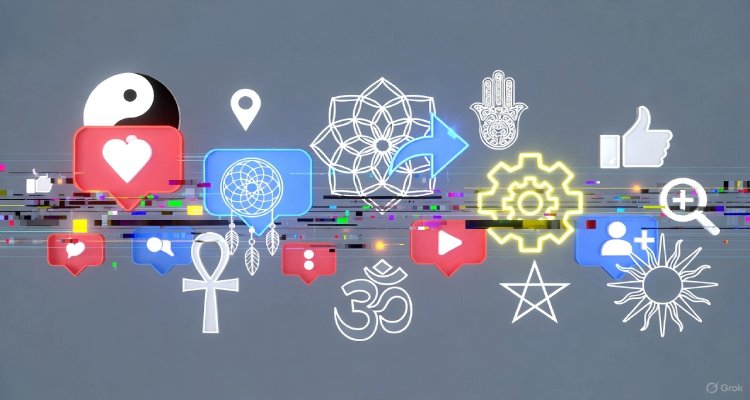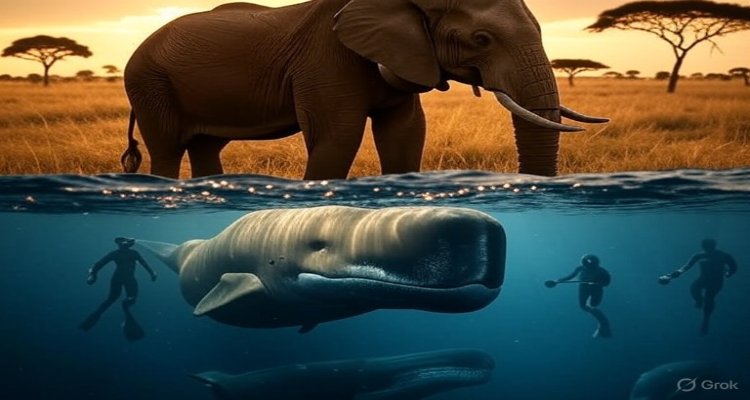The Animal Internet: How Elephants and Whales Are Learning to ‘Talk’ Online
Scientists are exploring a groundbreaking “animal internet,” decoding how elephants and whales may one day communicate online through sound, AI, and digital signals.
Introduction: A New Kind of Internet Connection
Imagine logging online not just to chat with friends or colleagues, but with an elephant in Kenya or a whale in the Pacific Ocean. This isn’t science fiction—it’s the foundation of what researchers are calling the “animal internet.” A fusion of artificial intelligence, bioacoustics, and digital networks, the concept is reshaping how humans connect with the natural world, offering a glimpse into a future where elephants and whales might quite literally “talk” online.
Context & Background: The Language of Giants
For centuries, humans have marveled at the rich and complex communication systems of elephants and whales.
- Elephants use infrasonic rumbles—vibrations so low in frequency that humans can’t hear them—to send messages across miles of savannah. These calls carry information about migration routes, threats, and even emotional states.
- Whales, particularly humpbacks and sperm whales, are famous for their songs, intricate sound sequences that can last hours. Some of these vocalizations act as cultural signatures, passed down through generations.
Until recently, much of this communication remained a mystery. But with advances in machine learning, underwater microphones, and satellite-linked sensors, scientists are beginning to decode these sounds and translate them into a digital language—laying the groundwork for an interspecies internet.
Main Developments: Building the “Animal Internet”
The idea of an animal internet has gained momentum over the past decade, powered by projects that combine conservation, technology, and big data.
- The Elephant Listening Project (Cornell University): Using AI to analyze thousands of hours of infrasonic calls, researchers can now identify distinct “phrases” used by elephants. Early findings suggest elephants may even use individual names.
- Project CETI (Cetacean Translation Initiative): Based in the Caribbean, this project uses natural language processing—similar to the technology behind human translation apps—to interpret sperm whale clicks, known as “codas.” Scientists hope these breakthroughs could one day enable two-way communication.
- Global Tracking Networks: Satellites and GPS collars allow researchers to map animal movements in real time. When combined with acoustic data, these tools create a digital ecosystem where animals’ voices can be archived, analyzed, and—potentially—interacted with.
The result is not just passive observation, but a potential dialogue between humans and some of Earth’s most intelligent species.
Expert Insight: Science Meets Ethics
“Think of it as the next stage of the internet—one that transcends species,” says Dr. Karen Bakker, an environmental researcher and author of The Sounds of Life. “We are on the brink of being able to understand, and perhaps even participate in, animal conversations.”
Yet, experts also caution against overreach. Communicating with elephants and whales may sound revolutionary, but it raises ethical concerns. Should humans actively engage in these conversations, or simply listen? Could digital contact disrupt natural behaviors?
Marine biologist Dr. David Gruber of Project CETI stresses: “The goal isn’t to teach animals our language, but to respect and learn from theirs.”
Impact & Implications: Why It Matters
The implications of an animal internet reach far beyond novelty.
Conservation: By listening in real time, researchers could detect distress calls from elephants facing poaching threats, or track whale pods navigating shipping routes, reducing collisions.
Cultural Preservation: Elephant and whale communication systems are not just functional—they’re cultural. Preserving them may be as critical as safeguarding human languages at risk of extinction.
Philosophical Shift: If humans can truly “talk” with animals, our perception of intelligence, rights, and coexistence could undergo a radical transformation.
But there’s also a risk: what happens if this technology is misused for exploitation rather than protection? For example, poachers could potentially hack acoustic networks to locate elephant herds. Safeguarding this new digital ecosystem will be just as important as developing it.
Conclusion: A Future of Shared Voices
The dream of an animal internet is no longer confined to speculative fiction. With elephants rumbling across savannahs and whales singing deep in the ocean, humanity is beginning to build the digital bridges needed to hear—and maybe one day respond to—them.
Whether it becomes a tool for conservation, a channel for interspecies dialogue, or a profound reminder of life’s interconnectedness, one thing is clear: the internet of the future might not just belong to humans. It could belong to elephants, whales, and the wider chorus of the natural world.
Disclaimer : This article is based on ongoing scientific research and emerging projects. Some concepts remain in early stages of development, and results may evolve as studies progress.











